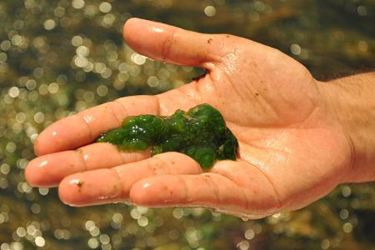San Francisco's Nutrient Removal Bill Approaches $1.5 Billion


Though the peak season for harmful algal bloom in source water is coming to a close, the costs of protecting the San Francisco Bay from nutrient pollution is approaching a startling figure.
“Removing nutrients from the wastewater that flows from San Francisco sewage plants into the bay — which likely encouraged the growth of massive algae bloom this summer — could cost up to $1.5 billion,” the San Francisco Chronicle reported. “The main source of these nutrients is treated wastewater coming out of 37 sewage treatment facilities, and San Francisco is responsible for up to 20% of those nutrients.”
Nutrients like nitrogen and phosphorus are responsible for growing amounts of toxic algae blooms in source water all over the country, and these blooms can lead to dangerous consequences for drinking water. This was the case for Toledo, Ohio, which instituted a high-profile ban on drinking water use in 2014 due to toxic algae.
With rising temperatures, increased use of fertilizers, and more factors driving toxic algae growth, numerous states have implemented reduction measures. Now, it appears San Francisco's efforts will further emphasize the rising costs of this contamination.
“Upgrading San Francisco’s main wastewater treatment plant to remove nitrogen from a portion of its wastewater could cost $75 to $100 million, while doing so for all of its wastewater would cost up to $1.5 billion,” according to the Chronicle. “The San Francisco Bay Regional Water Quality Control Board has said it will likely require a cap on nutrients when the agencies’ regional permit comes up for renewal in 2024.”
Even though it faces a particularly steep price tag, San Francisco has the opportunity to demonstrate a commitment to solving a problem shared by many other communities across the world. As it seeks to find the funding necessary to fix its nutrient issues, it may establish a helpful model.
“San Francisco, and other Bay Area cities, can’t do much about warmer days and climate change, but they can do something to cut back on all the nitrogen and phosphorus that’s dumped in the bay from wastewater treatment plants,” per NBC Bay Area. “The hope is San Francisco can lead the way for other municipal water treatment plants to do the same.”
To read more about how wastewater operations mitigate nitrogen and phosphorus contamination, visit Water Online’s Nutrient Removal Solutions Center.
